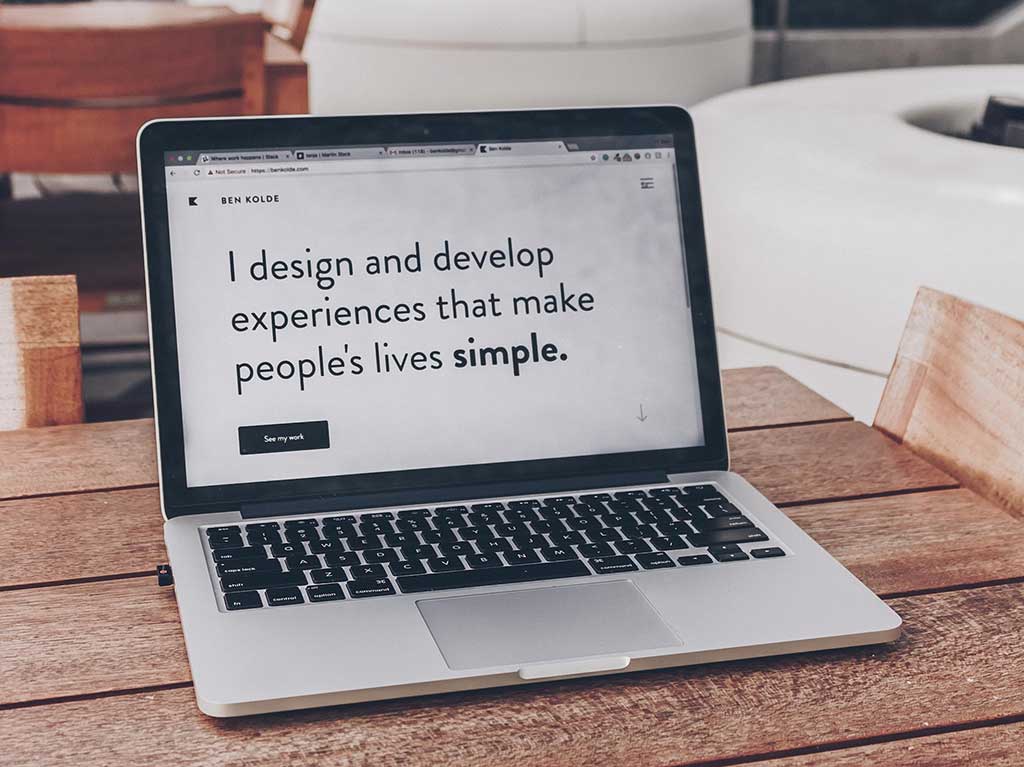Responsible Research & Fundamentals
How to choose the right user research incentives

Written by: Phil Hesketh
Published on:
Recruiting people for UX research studies can be challenging. To attract and retain the right participants for each initiative, it’s helpful to offer user research incentives.
In this article we’ll be looking at the benefits and downsides of offering compensation, and the most effective types of incentives you can offer when recruiting participants for your research.
What are research incentives?
A user research incentive is a reward or compensation offered in exchange for people contributing their time, knowledge, and thoughts to your UX and CX research studies. This might include participating in usability tests, surveys, and customer interviews.
Incentives are a part of participant recruitment strategies for many organizations. They help researchers to recruit a wider pool of people, and gather the number of customers or non-customers they need to provide valuable, actionable feedback for their business.
Research incentives can be literally anything your specific organization decides to give out to its participants, but typically they are things like cash, gift cards, and company merchandise.
While it’s totally up to you what is offered as an incentive for research participants, it’s important to consider whether these rewards are:
Helping you attract and talk to people that match your ideal demographic
Valuable or motivating for potential participants
Fair compensation for the time people will spend helping with your research
Not putting your participants at a disadvantage or risk of any kind
Should I offer incentives for user research?
Incentives for user research are a key part of your overall customer experience. And they help create goodwill for your brand if you’re looking to find non-customers for your studies.
These incentives are especially important if you have a UX research panel that you call on frequently to help out with new studies. People will be more likely to stay on as part of your panel if they feel like they’re valued and being adequately compensated for their time.
Time is money, and people will appreciate being offered an incentive if they’re going to take part in your tests, surveys, or interviews.
If you’re not compensating people for their time (which may take time away from their own work or family) they’re less likely to give high-quality feedback—or they might just spend their time complaining!—meaning you won’t get the answers you need to meet your research goals.
Are there downsides to offering research incentives?
While incentives are recommended to “pay” your participants for their time and feedback, there are a few downsides to think about when you’re creating your UX research plans.
These might include:
Conflicts of interest
Introducing biases
Excluding participants who aren’t interested in the incentive you offer
Over-sampling of certain groups
Attracting participants who consent because they want the incentive, not because they want to help your organization
Ensure you treat your participants with respect
It’s important to ensure that your incentives don’t come across as exploitation or bribery. Participants who are in financially vulnerable groups can be particularly at risk of consenting to take part in research in this context.
Technically, offering any incentive commercializes the relationship between you and your participants, but it needs to be made clear that the compensation is their reward for helping your organization out if they meet certain criteria in your studies. It is in no way a coercion to get them to give consent.
Be aware that some participants aren’t able to receive incentives
Certain participants will not be able to claim financial compensation for their time (e.g. government officials). So if you know your research group isn’t able to accept any incentives for whatever reason—don’t offer them.
Incentives might financially impact your participants
If your participants claim any government benefits, receiving cash incentives might affect these.
If you think there is any possibility your participants might be impacted by your well-intentioned compensation, make sure they have the ability to decide for themselves whether or not to accept your pay incentives—or offer them something else like groceries or gift cards instead.
As more and more nonprofits begin to do user experience research and robust program evaluation, it’s important to understand the downsides of offering incentives.
The biggest is the incentive form and distribution. Sometimes you have to get creative when deciding which type of incentive to give; perhaps groceries or physical incentives are best, but other times discounts or gift cards work better.
I have found that knowing your audience is highly beneficial, this includes knowing which incentive is going to best meet their immediate needs without causing negative effects like required tax reporting or reduction in public benefits.
Lotus Chaney, Sr. Researcher and UX Research Practice Builder
How do you compensate research participants fairly?
As mentioned above, your user research incentives are limited only to your imagination.
But you should think of them in terms of the type of study you’re running, how much time it will take participants to complete, the demographics you’re recruiting, and most importantly—the research budgets you have to work with!
If your company has a small budget, or is unable to offer cash incentives, you’ll need to figure out suitable cash equivalents that can both attract people to your study and fairly compensate them for their time.
Here are the most common types of incentives, and when you should think about using them:
Cash
Who doesn’t love getting cash! This is one of the most popular incentive types, as participants can clearly understand the time vs. money trade.
If you want a simple, straightforward incentive that doesn’t involve shipping costs, cash is a great option. It’s most beneficial if your participants for the study are living in the same country, as it’s easier for you to calculate what will translate into fair compensation for them.
It can also help attract non-customers who aren’t aware of your company, and customers who don’t want swag or a product/service discount from you.
Pros
It’s easy for your organization to budget for
It’s simple and cost-effective to send to participants
Participants can decide how they spend their reward
Highly motivational in getting participants to give informed consent to your studies!
Cons
Participants in certain jobs are unable to receive cash incentives
Can feel more like a bribe to get people into your research sessions
Can affect public benefits received by participants
You might face extra tax liabilities
Difficult to decide on a dollar value to pay participants (especially if they’re in other countries)
Digital or physical gift cards
If recipients are unable to receive cash incentives for any reason, gift cards are great as a replacement option.
The monetary value is clear so people can see that your researchers pay fair compensation, and if you offer a few different gift card options, participants can choose the one that they like best.
Pros
Easy for participants to use
Attractive offer for customers and non-customers to opt in to your studies
Cons
Takes more time to set up gift card options with third party suppliers (e.g. Amazon)
Your gift cards might not be valid if participants live in other countries
Physical gift cards will incur postage fees
Some participants might not be able to take gift cards for ethical/employment reasons \
Company swag
Many people love getting free stuff, whatever it looks like. This makes company merchandise (aka swag) another popular option as an incentive.
You’ll probably have seen plenty of social media posts with people proudly displaying the t-shirts, socks, mugs, stickers and other fun bits and pieces that companies have sent them.
If your organization has branded products, offering a swag bundle can be a great incentive offer. It’s a good solution if your participants only need to meet with you for a short time, or complete a quick survey or interview.
But if your research needs are more on the intensive side for participants, they might not see swag as fair compensation for their time.

Pros
People love fun freebies
Extra promotion for your company if participants post their swag haul on social media, or wear your t-shirt in public
Great option if you already have branded merchandise on hand
Can be more cost effective than cash or gift cards if you order swag in bulk
Cons
Not as attractive as cash incentives
Non-customers might not care about your company merchandise
Extra postage costs might need to be factored in
Charitable donations
If your participants are motivated by creating social impact and donating to the greater good of the planet, a donation to charity might be the perfect option for your user research incentives.
But as this might not be quite motivating enough to get the numbers and demographics you need for your study, it’s a good idea to offer charitable donations as an alternative alongside other incentives.
Pros
Participants feel they’re making a positive change in the world
Their public benefits won’t be affected
No issues with bribery
Ideal if participants are unable to accept cash or gift card incentives
Cons
Might not be motivating for potential participants, as they don’t personally get anything for their time and feedback
Product/service discounts
If you don’t have a budget for incentives, offering free (or discounted) products or services is a good solution. This option is especially helpful if your UX researchers will be working with your most engaged customers.
Your participants will feel they’re getting something valuable in exchange for their feedback, without leaving your organization out of pocket. You’ll also get the built-in benefit of increased engagement with your product or service.
Pros
Doesn’t involve a financial outlay
Doesn’t involve a ton of admin work
Has built-in, ongoing engagement benefits for your organization
Cons
Non-customers might not find this a great incentive
Participants might find it hard to match their time to a dollar value
Perceived value of the offer will generally be lower
Your organization or platform will need a way to manage things like discounts or product credits
Creating a UX research incentive plan
For each new UX study you intend to carry out, you need to map out an incentive plan. Things to keep in mind are:
The demographics of your participants
The budget you have allocated
How to ensure you stay within budget but still gain valuable insights
Ethics and accessibility
Define your participants
Once you’ve decided who your ideal participants will be, you can make more informed decisions about the type and amount of compensation that will be most interesting and valuable to them.
Choose the right incentive(s)
If you’re a responsible researcher, it can be time-consuming trying to factor in all the financial variables and ethics around the incentives you offer.
These could include factors such as:
How much to pay local customers vs. customers in lower socio-economic countries
Whether your participants are nonprofits or charities
What type of compensation is appropriate for vulnerable or at-risk demographics
For this reason, you could choose to offer a few different compensation options. This can help ensure that certain populations aren’t excluded from getting their incentive. As an example, you could offer people their choice of either cash, food vouchers, or a charitable donation.
You’ll also need to take into account how much different participants expect for their time.
If you’re conducting interviews with enterprise B2B customers or high-level professionals, they will expect a higher incentive than, say, a general customer who’s taking a quick survey for you online.
When recruiting for UX (or similar) research, cash or cash equivalent is often, but not always, the best place to start. This of course requires sufficient budget and an understanding of the appropriate amount to motivate your target user group(s).
However, cash is not always possible, or it might not be sufficient as the only option. Sometimes you may have to get research done despite having little to no budget. These situations require more creative solutions such as a lottery-style incentive, giving out company swag or discounts, or something as simple as a snack/drink for quick feedback.
Even when you may have a budget for a good cash incentive, you may want to consider alternative incentive options to be more inclusive and help motivate a variety of users. This includes: a charitable donation alternative, early access to a product feature, etc.
Ultimately the choice of incentive(s) comes down to understanding who your target users are and what they may be most motivated by. Ideally, all target users will be able to find an incentive that motivates them to participate.
Andrew Wismer, Ph.D. Human Factors & Ergonomics Researcher at HP Inc.
Calculate your incentive amount
There are no hard or fast rules around how much an incentive should be. But as a rule of thumb, it should be what your company can reasonably afford to get effective UX research done.
When you’re getting stakeholder sign-off for an incentives budget, you’ll need to factor in:
How many participants you need for the study
How much time will be needed from each participant
How much effort will be required from participant (e.g. will they need to commute to meet with you, or can they participate remotely)
Local vs. international participant amounts
How much each participant will roughly expect as fair compensation
Whether you’ll be doing moderated or unmoderated research
Whether you’ll be sending physical products that incur local or overseas shipping costs
Any tax liabilities for your organization
Getting enough budget approved for incentives is always a juggling act alongside all the other costs that need to be taken into account with UX research.
But remember that cheap incentives can be as bad (or worse) than offering no compensation at all, leaving you with lower consent rates, or leading to poor quality insights at the end of the study.
Decide how and when participants will get compensated
Once you’ve decided how much your participants will be offered as an incentive, you need to figure out how and when to give them their reward.
This could include:
Wire transfers
Cheques
Payment via Venmo, PayPal or other digital payment apps
Cash in hand
Posting them swag or gift cards
Emailing them digital gift cards
You’ll need to consider the practicalities of getting incentives into the hands of your participants. For example, shipping swag to 100 people might not be cost-effective for your research purposes if all your participants live overseas.
You also need to plan when people will get their incentive. Do they qualify as soon as they sign up? Will the incentive be given after they’ve completed their part, or when the entire study is complete? And what happens if they drop out of the study part way through—will they still be eligible for the incentive?
All these what, how, and when details of incentives need to be clearly set out as part of your informed consent process.
Wrapping up
Part of effective user research is showing your participants that their time and feedback is appreciated by your organization.
When a heartfelt “thank you” isn’t enough, offering appropriate user research incentives can help your users feel valued. Incentivizing studies can also help boost recruitment numbers so you get the necessary amount of participants on board for your research panel or field studies.
If you’re looking to carry out UX research studies for your company, Consent Kit can help you formalize your research process, save time, and ensure your studies are accessible, compliant, and efficient. Try it free for 14 days.



